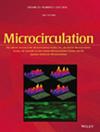Dual Disruption of Embryonic Angiogenesis by Hyperglycemia: Structural and Hemodynamic Alterations Revealed via OCT Angiography and Biospeckle Imaging in the Chick CAM Model
Abstract
Objective
This study investigates the effects of hyperglycemia on vascular morphology and hemodynamics during embryogenesis using the chick chorioallantoic membrane (CAM) model.
Methods
We employed a dual-modality, label-free imaging approach, Optical Coherence Tomography Angiography (OCTA) and biospeckle imaging, to evaluate microvascular architecture and real-time flow dynamics in chick embryos subjected to hyperglycemic conditions. Quantitative metrics such as vessel area, branching junctions, lacunarity, and biospeckle contrast were analyzed to assess angiogenic and metabolic responses.
Results
Hyperglycemia caused significant vascular attrition, including a 31% reduction in vessel area, 55% fewer vascular junctions, and a 58% increase in lacunarity, indicating fragmented and simplified networks. Biospeckle imaging revealed reduced blood flow velocities and elevated non-vascular speckle contrast, suggestive of metabolic stress and endothelial apoptosis. These vascular impairments extended to the retina, where hyperglycemic embryos exhibited thinner retinas, smaller lenses, and sparser retinal vasculature.
Conclusion
Our findings demonstrate that embryonic hyperglycemia leads to widespread vascular simplification and hemodynamic dysfunction, driven by oxidative stress and disrupted VEGF signaling. Unlike adult diabetic vasculopathy, the embryonic response involves global, not focal, vascular defects. This work establishes a novel multimodal imaging framework for studying developmental angiogenesis and lays the groundwork for future investigations into therapeutic strategies targeting diabetic embryopathy.

 求助内容:
求助内容: 应助结果提醒方式:
应助结果提醒方式:


